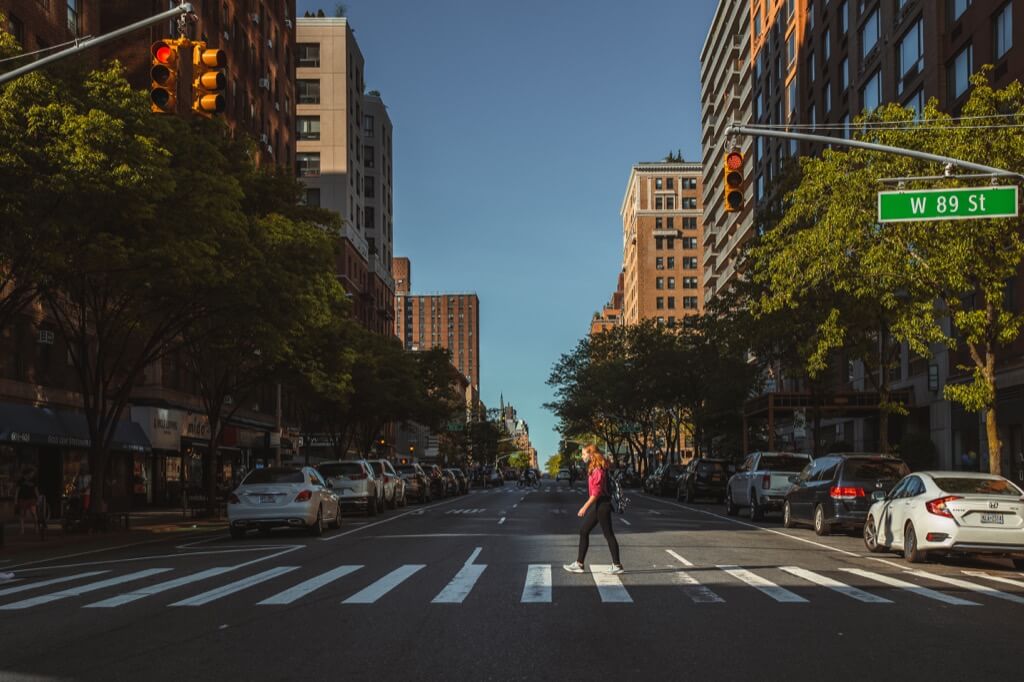In the streets of our cities, a peculiar urban placebo exists with many crosswalk signal buttons. While pedestrians often press these buttons with the expectation of hastening the ‘Walk’ signal, in numerous cases, especially in major cities like New York, they serve no functional purpose. An estimated 90% of pedestrian buttons in New York City, for instance, are non-operational. This revelation often surprises city dwellers and visitors alike, challenging the common perception of direct control over pedestrian traffic signals.
The primary reason behind these ‘placebo buttons’ relates to traffic efficiency. Allowing manual override of traffic signals by pedestrians can disrupt the flow, particularly in areas with heavy traffic. Modern intersections employ sophisticated computerized systems to manage traffic flow, including pedestrian crossings. These systems are designed to optimize traffic movement, rendering many individual crossing buttons unnecessary. As John DeBenedictis, director of engineering at the Boston Transportation Department, puts it, in busy intersections, pedestrian traffic is a constant, and the system is calibrated to manage it efficiently without manual input.
Interestingly, not all crosswalk buttons are purely placebo. In some cities, these buttons are programmed to be functional only during specific times of the day. For example, they might be active during off-peak hours but overridden by automated systems during rush hours. This selective functionality often causes confusion among pedestrians about the effectiveness of these buttons.
In certain localities, such as Spokane, and Washington, crosswalk buttons influence whether the ‘Walk’ signal is displayed, but not the timing of traffic lights. Here, pressing the button is crucial for the walk signal to appear. Failing to wait for this signal can be considered a traffic violation, as emphasized by signal operations engineer Val Melvin. This underscores the importance of these buttons in maintaining legal compliance in pedestrian behaviors.
Contrasting with the U.S., Canadian cities like Victoria, and British Columbia, tend to maintain functional crosswalk buttons. As of 2008, most Canadian cities did not employ placebo buttons, maintaining a system where pedestrian input actively influences traffic signals. This approach reflects a different urban planning philosophy, possibly attributing more importance to pedestrian control in traffic systems.
For the average pedestrian, distinguishing between functional and placebo buttons is challenging. There is rarely any direct indication of their functionality. A general rule of thumb is that in larger cities and at intersections with heavy traffic, it is less likely that the crosswalk buttons are operational. This lack of transparency can lead to confusion and a sense of redundancy among pedestrians.
A common misconception about crosswalking and elevator buttons is that pressing them multiple times will expedite the desired action. However, this is not the case. Once pressed, the button has done its job, and any additional presses are redundant. The prevalence of placebo buttons in some cities might stem from this human inclination to engage in action while waiting, finding a sense of satisfaction in the act of pressing a button.
Staying Safe at Zebra Crosswalks
When you approach a zebra-striped crosswalk, it’s crucial to remember that these crossings might not be as safe as they appear. Research from New Zealand shows that pedestrians are 28% more likely to be hit by a car at these crosswalks compared to jaywalking. This increased risk is often because pedestrians tend to be less cautious at marked crosswalks, sometimes not even checking for oncoming traffic. So, whenever you’re about to cross at one of these stripes, make sure to stop, look, and listen, just as you would at any other part of the road.
Understanding the Efficacy of Safety Features
If you’re relying on raised safety medians or marked crosswalks to keep you safe, it’s essential to know that these features might not offer the protection you expect. Studies in the United States have shown that marked crosswalks without additional signals, like stop signs or flashing lights, actually have higher pedestrian accident rates than unmarked areas. Also, safety medians in the middle of roads don’t significantly improve pedestrian safety, regardless of the road’s width. Always exercise caution and stay vigilant, regardless of these features.
The Evolution of Pedestrian Crossing Signals
It’s interesting for you to note the evolution of pedestrian signals over time. The first-ever pedestrian signal, set up in London in 1868, marked the beginning of a journey that has now reached a stage where some cities are adopting automatic detection systems for pedestrians. Unlike the traditional button-based systems, these new systems use infrared, microwave, or weight sensors to detect when someone is waiting to cross. This technology shift aims to improve pedestrian safety and traffic flow efficiency, offering you a smarter and potentially safer crossing experience.
How to Approach Modern Crosswalks
When you come across a modern crosswalk equipped with automatic detection systems, it’s good to understand how they function. Unlike traditional button-press systems, these crossings can detect your presence using advanced sensors. While this technology is designed to enhance safety and convenience, you should still practice safe crossing habits. Always wait for the signal to change, keep an eye out for distracted drivers, and cross quickly but safely.
The Origin of Pedestrian Signals
The first pedestrian crossing signal, created by John Peak Knight, was installed in Westminster, London, in 1868. This historical fact not only highlights the longstanding efforts to improve pedestrian safety but also reminds you of the continuous advancements in traffic management. Reading about this development offers an appreciation for how far pedestrian safety measures have come, shaping the way you interact with traffic systems today.
Pedestrians need to recognize the evolving nature of urban traffic systems. As we’ve seen, the functionality of pedestrian buttons at crossings has significantly shifted, with many now playing a minimal role in traffic control. This change calls for heightened awareness and caution among pedestrians. While technological advances with automatic detection systems are enhancing the efficiency of crossings, the responsibility for safety still largely rests with the individual. It’s crucial to remain alert, follow traffic signals diligently, and not rely solely on the presence of crossing buttons or marked lines for safety. This awareness ensures a safer and more informed experience for pedestrians navigating city streets.




